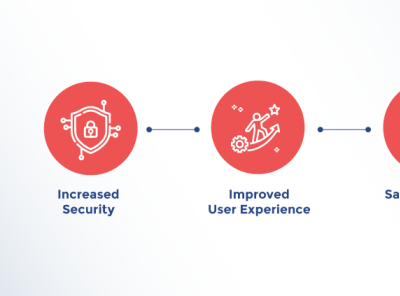Guide to Successful Single Sign-On Implementation
Single Sign On (SSO) is an authentication and authorization method with SSO Implementation Steps that allows users to access multiple business apps with a single set of login credentials. Successful Methods.
SSO is an authentication and authorization method that allows users to sign into multiple business applications with a single set of credentials. Simply put, single sign-on (SSO) eliminates the need to log in and out of different applications by consolidating their respective login screens into a single, unified interface. When users don't have to repeatedly sign in and out of numerous web, on-premises, and cloud applications, they can focus on doing what they came there to do: getting work done. Single sign-on (SSO) is an integral part of IAM and other access control services.
When implemented properly, an SSO solution streamlines an organization's password management, which boosts productivity and security by decreasing the likelihood of lost, weak, or forgotten passwords.
Guide to Successful Single Sign-On Implementation
For more effective use of single sign-on, consider the following recommendations.
Resetting Your Password Or Email Is Not Allowed
You should make use of this function to prevent a user from resetting or changing his password via email. Since the company owns the email server associated with an employee's work email address, it is generally preferred that she only use that address. The user cannot be restricted to using it as their own email address. This safeguards sensitive information and stops employees from gaining access to everything the company has to offer through a single point of entry. You can also regulate your workers' access so that they can't see anything unnecessary to their current task.
Timeouts can be set for individual sessions
Don't keep a dormant user logged in forever; instead, allow their session to time out. The SAML response can be used for the session timeout value, or you can set it independently for each user account. After a user's session has ended, the app must send a SAML request to the identity provider to verify whether or not the user is still authorised to sign in.
Login Necessary
When a sign-in request is received but the user's browser is already logged in, the application should create a new session. This reduces the likelihood that a user will access someone else's information by accident. As a best practise for SSO, requiring users to sign in more than once is helpful for those who use SSO portals to access multiple accounts within the same software.
Methods for Delegated Authentication Improvement
Unlike single sign-on, which can compromise user experience or security, delegated authentication allows for multiple payment authentication methods. The onus of authentication can be passed from the issuer to another party. This party could be an acquirer, a provider of digital wallet services, or the store owner themselves. Networks like Visa, Mastercard, and GIE Cartes Bancaires have released Delegated Authentication broker software.
If you are a larger company that works with a variety of PSPs, your customers may have a very different buying experience than if you were a standalone business. It's possible that some customers will experience more difficulty or fewer authentication options than usual, which will increase the already high barrier to entry in this type of transaction. In addition, the inconsistent approach may not help ease customers' worries.
Recommendations for Federated Authentication
Digital identities and access to services are rethought with federated authentication. To create a unique online persona, a user must have their information managed by an identity provider (IdP). Using a unified digital ID, the identity provider earns the trust of various third-party apps and services.
There are numerous benefits of a federated identity management architecture over conventional authentication methods. You should put these benefits to work for your business.
Summing It Up
When employee credentials must be used for partner or customer portals, delegated authentication is preferred. Federated authentication is more versatile and links access management rights. Federated identity management authenticates user access to Google. Despite this benefit, most organisations prefer sing sign on software because it provides access to internal systems. Related firms don't need to duplicate information, users are more traceable, and user experience is improved by requiring fewer logins to access multiple services.
Don't hesitate to buy an SSO Configuration solution like NinjaAuth by 500apps for enterprises with varying authentication needs. You can manage an infinite number of apps with a single sign-on. Learn more about NinjaAuth on 500apps.









